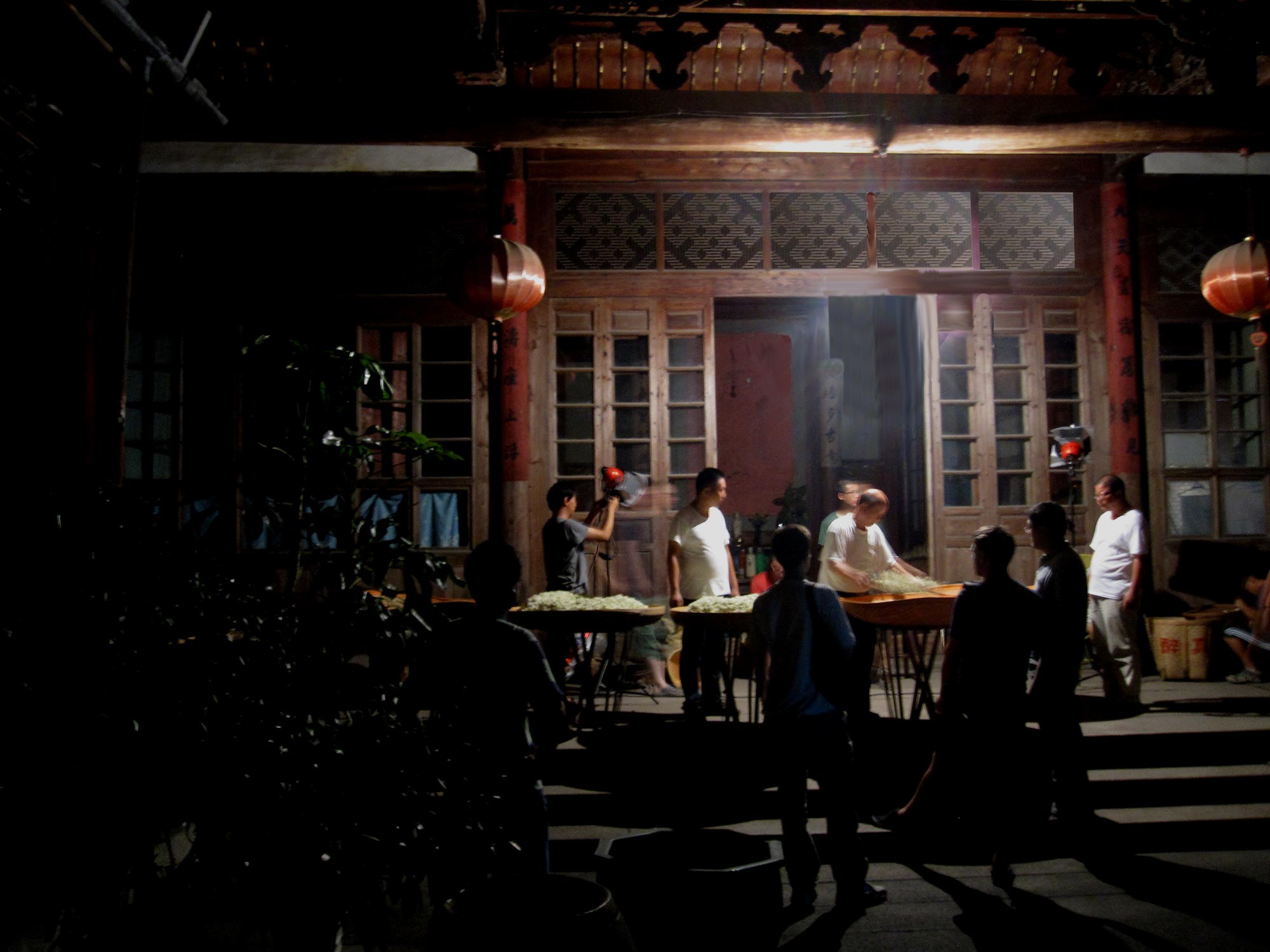In mid-August 3 years ago, I was fortunate to be in Fuzhou, the capital of Fujian province during Jasmine harvest season. My host, Chris West, formerly of Min River Tea, arranged for us to visit the old factory of Master Yu on the outskirts of town. We would be accompanied by the provincial Minister of Agriculture. He was to be present during the filming of CCTV’s beautiful documentary series, 茶,一片树叶的故事 06 一碗茶汤见人情, which roughly translates as “Tea, the Human Story”. It’s a six part series and Jasmine tea makes an appearance in part 6, at around the 4.30min mark. It’s in Mandarin and there are no subtitles unfortunately, but it’s still worth a watch for the gorgeous visuals.
The factory was theatrically lit in preparation for the film crew, adding an antique glow to the old wood screens and high rafters and setting the stage for the performance that would ensue.
In the heat of the Fujian summer evenings, Jasmine flower buds arrive at the factory having been picked earlier in the day. The unopened flower buds are laid out on bamboo trays to blossom in the sultry air of the factory. After a few hours the heady perfume begins to permeate the space and everything in it.

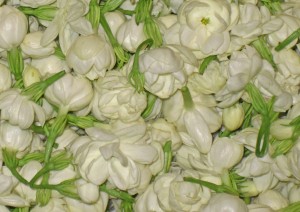
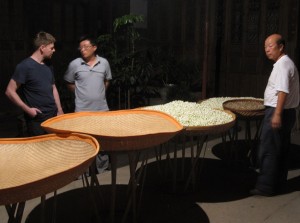
In their natural field habitat, the flowers open at night and close again in the morning. They still open in the evening even after they are picked, but must be kept cool until they arrive at the factory. After a few hours at the factory they begin to open in the August evening heat (40°+C). At this point Master Yu begins to sift out the still unopened buds. This is not as easy as it looks. He gave me a lesson and then let me try. The trick is in the angle the sifting basket is tilted and the wrist motion that shakes the buds through the screen.

After sifting, the popcorn-like flowers rest and wait for the arrival of sacs of green tea. Tea leaves were harvested in the spring and manufactured as per usual (fixed by pan-firing and dried). Sacs of finished tea are stored in the factory for several months until Jasmine harvesting season. Jasmine is sometimes added to white or black teas, or shaped pearls, but green small leaf tea is the most popular.


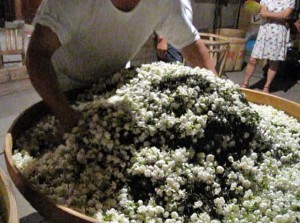
Green tea leaves are poured on top of the flowers and left to sit for about 1/2 hour. The two are then stirred gently to mixed flowers with leaves. They are left to mingle until dawn. After the tea is suffused with the Jasmine aromas, the tea is sifted out from the flowers with another basket and dried. The procedure here was repeated over 5 evenings, but some factories will process 2 or 3 times. In the documentary you can see Master Yu and his team sleeping in chairs until dawn.
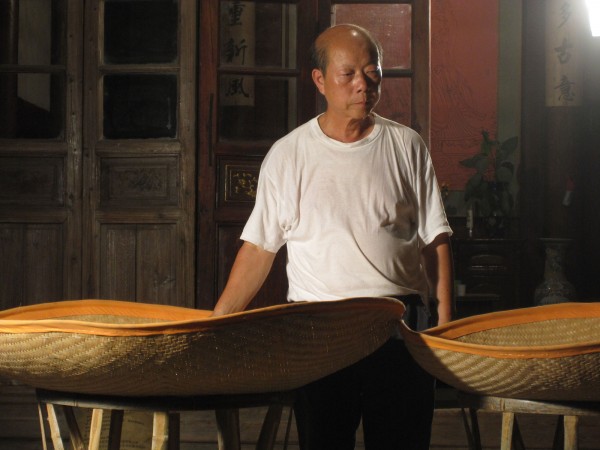
During the following week, the tea is sorted and packaged. Leftover flowers are sold in markets for making blooming teas, sachets and aromatic necklaces etc. Some Jasmine tea makers leave a few flowers in the tea (mostly for the western market). Better Jasmine tea has no flowers present. Tao Tea Leaf has is a good source for 3 high quality Jasmine teas.
I was not a fan of Jasmine tea before the visit to Master Yu’s factory, but now those memories are forever scented with Jasmine and whenever I drink this tea I am reminded of my good fortune to be invited to observe this remarkable process.

NOTE: There are 2 Jasmine tea recipes in The Tea Book: Page 152, Citrus Jasmine and page 161, Jasmine Evening, a rum cocktail.

